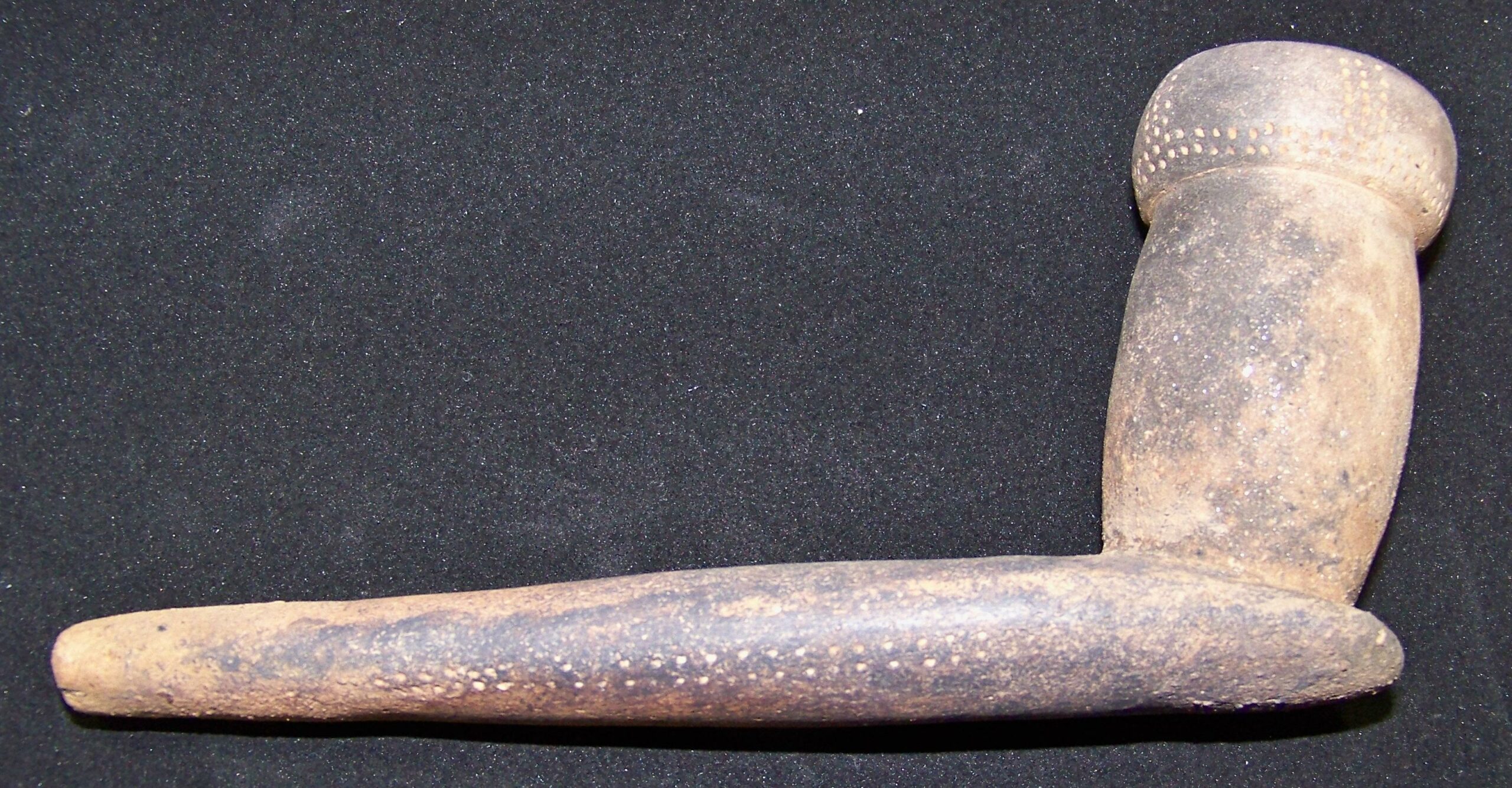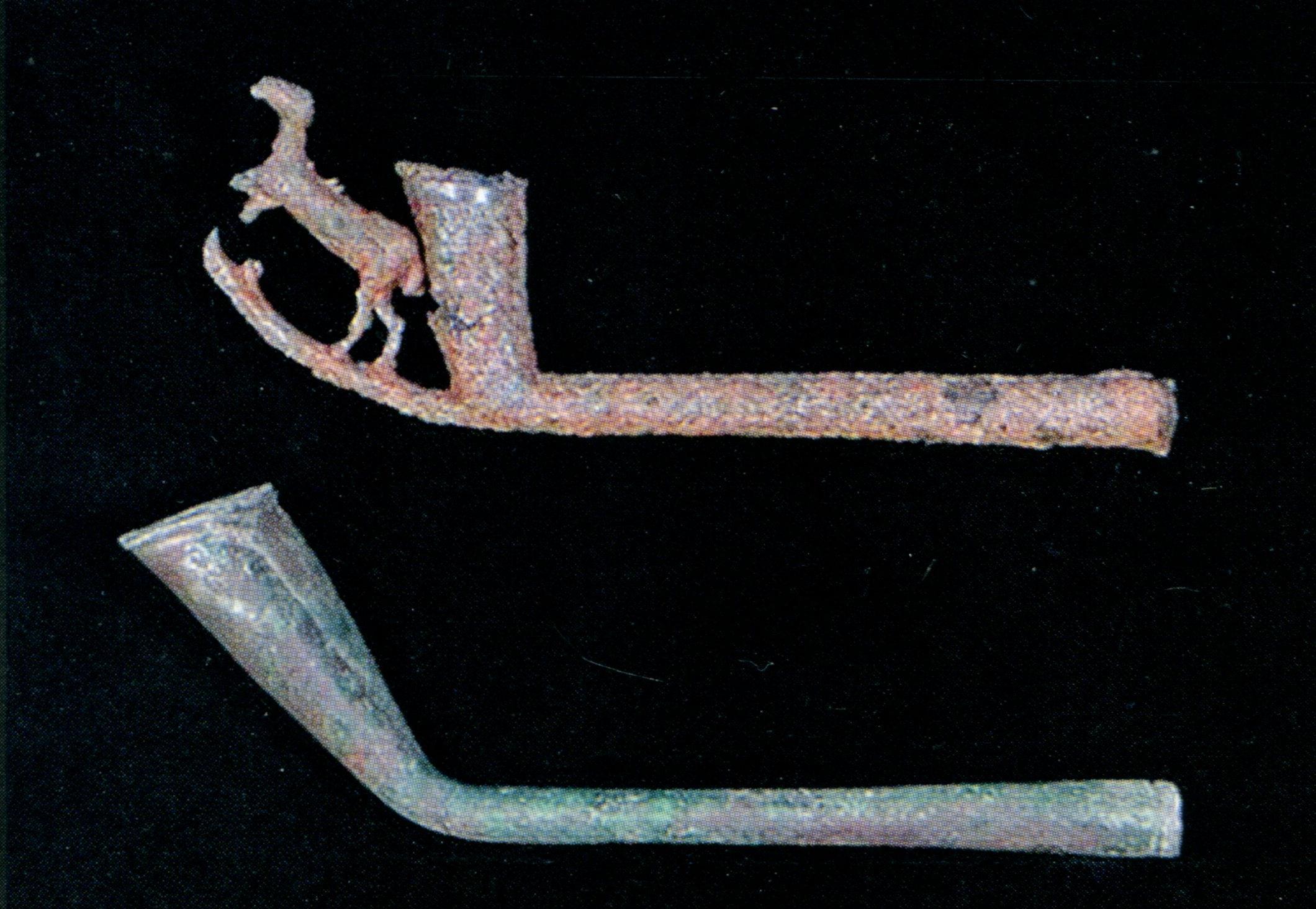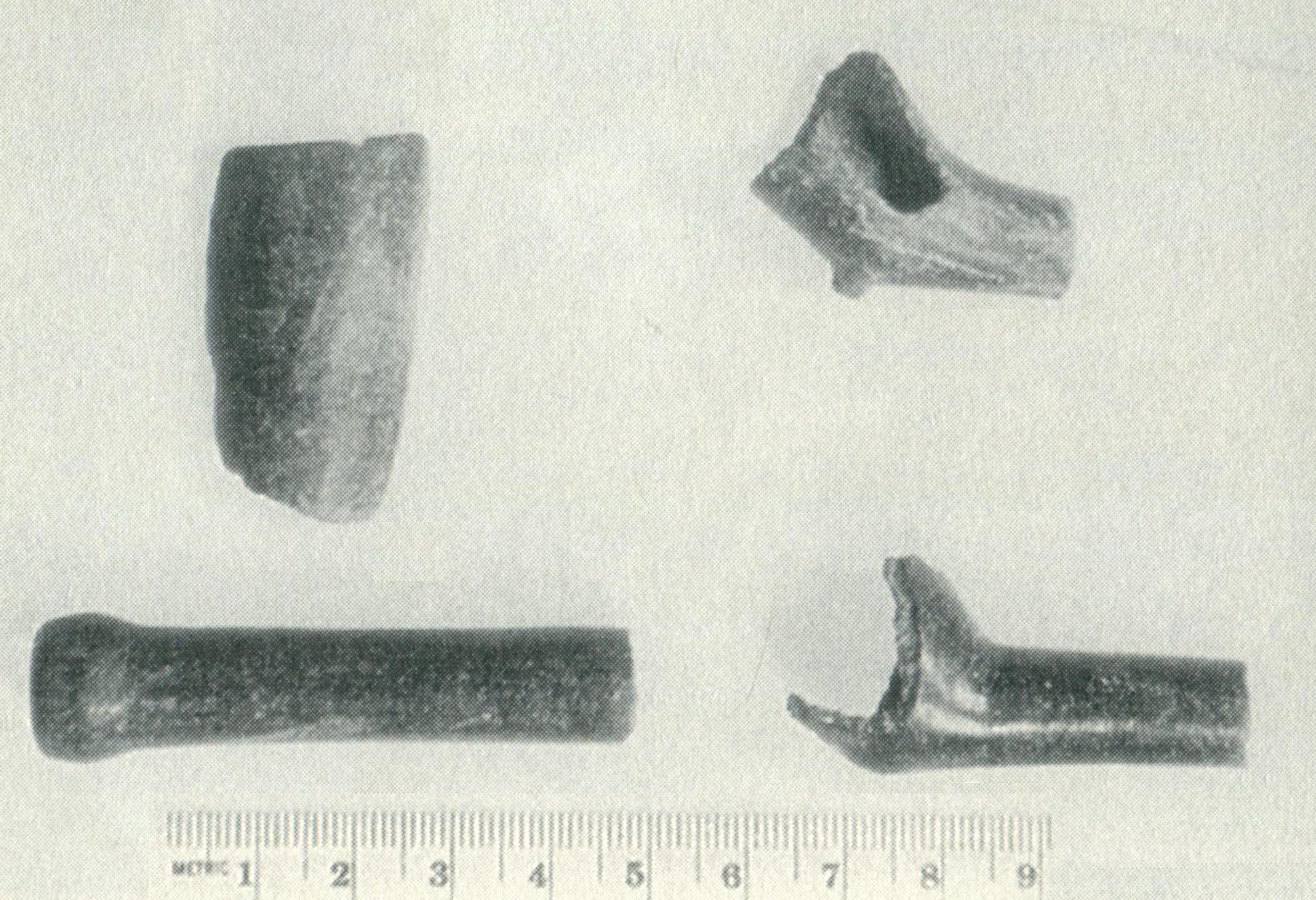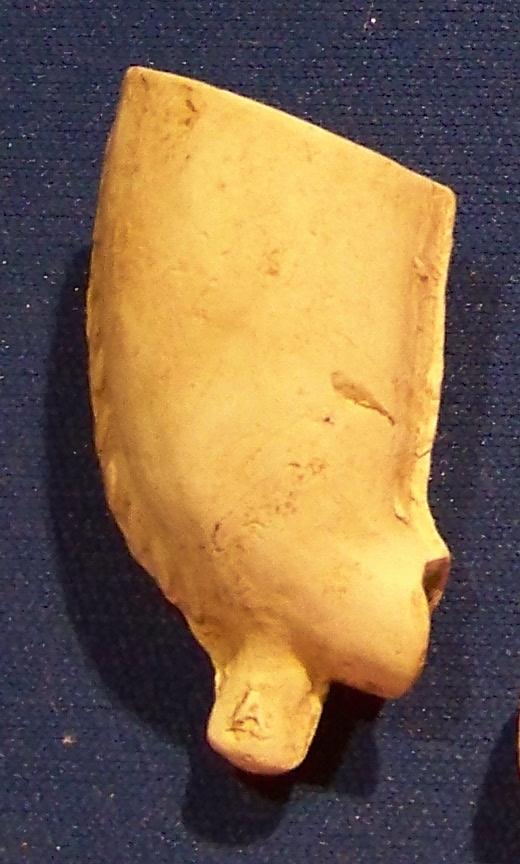This group of full stemmed pipes (top left) was reported by T.M.N. Lewis and Madeline Kneberg from the Hiwassee Island site in eastern Tennessee. They were recovered in the Hamilton context of the site and belong to the Middle Woodland period. The examples on the top left are steatite pipes while those on the top right are ceramic and show the pitting common to the leaching of the limestone tempering. The ceramic pipe on the lower left of this second group is also from Hiwassee Island. C.B. Moore recovered a shell-tempered ceramic example of this type and one example made of shale from Mississippian period burials near Chandler Landing on the White River in Arkansas.Moore’s example closely resembled the Hiwassee Island examples from the Woodland period, but indicated their continued use into the Mississippian period in that area.

The pipe shown above was recovered by Mr. Marty Benton near Roswell in northern Fulton County, Georgia. Other artifacts in the site were sparse, but the shell-tempered Hiwassee Island Complicated Stamped pottery and small Mississippian Triangular points present in the site were a clear indication of an Early to Middle Mississippian context. The pipe was tempered with a mixture of shell and mica.

There are a few examples of long stemmed pipes used during the historic period.Among them are the two metallic pipes pictured above that were reported by Alton Martin of Tyrone, Georgia in the CSAJ, Vol.53, No.3, 2006.Martin stated that the pipes were Creek in origin and from the Southeast, but gave no specific provenience.The upper pipe is made of pewter and featured a rocking horse in front of the bowl.The pipe is 6.5 inches in length and may date to the 1600 to 1700’s from other artifacts on the site.The lower pipe is made from sheet hammered brass and was found on a historic village site that dated between 1700 and 1713.These metallic pipes appear to be fashioned after the European kaolin trade pipes as were the Creek-made stone and clay pipes recovered at the Ocmulgee Trading House (A below).The trading house was established by the Carolina Trading company by 1690 and was abandoned by the Creek in 1716.Both English kaolin trade pipes and Creek-made clay and stone, long stemmed pipes that were fashioned after the kaolin pipes were recovered at the site.



Finally, evidence of the use of English kaolin trade pipes was recovered at the Jackson site (1 BR 35).This was a large Historic village site that may correspond to the Hitchiti village of Tamatle, identified on the 1733 De Crenay map.In all, 92 stem and 35 bowl fragments of kaolin pipes dating between 1710 (B above) and 1750 (C above) were collected as well as 7 aboriginal-made pipe fragments, one of steatite, were recovered.Five fragments were described as stems, four of which were round.